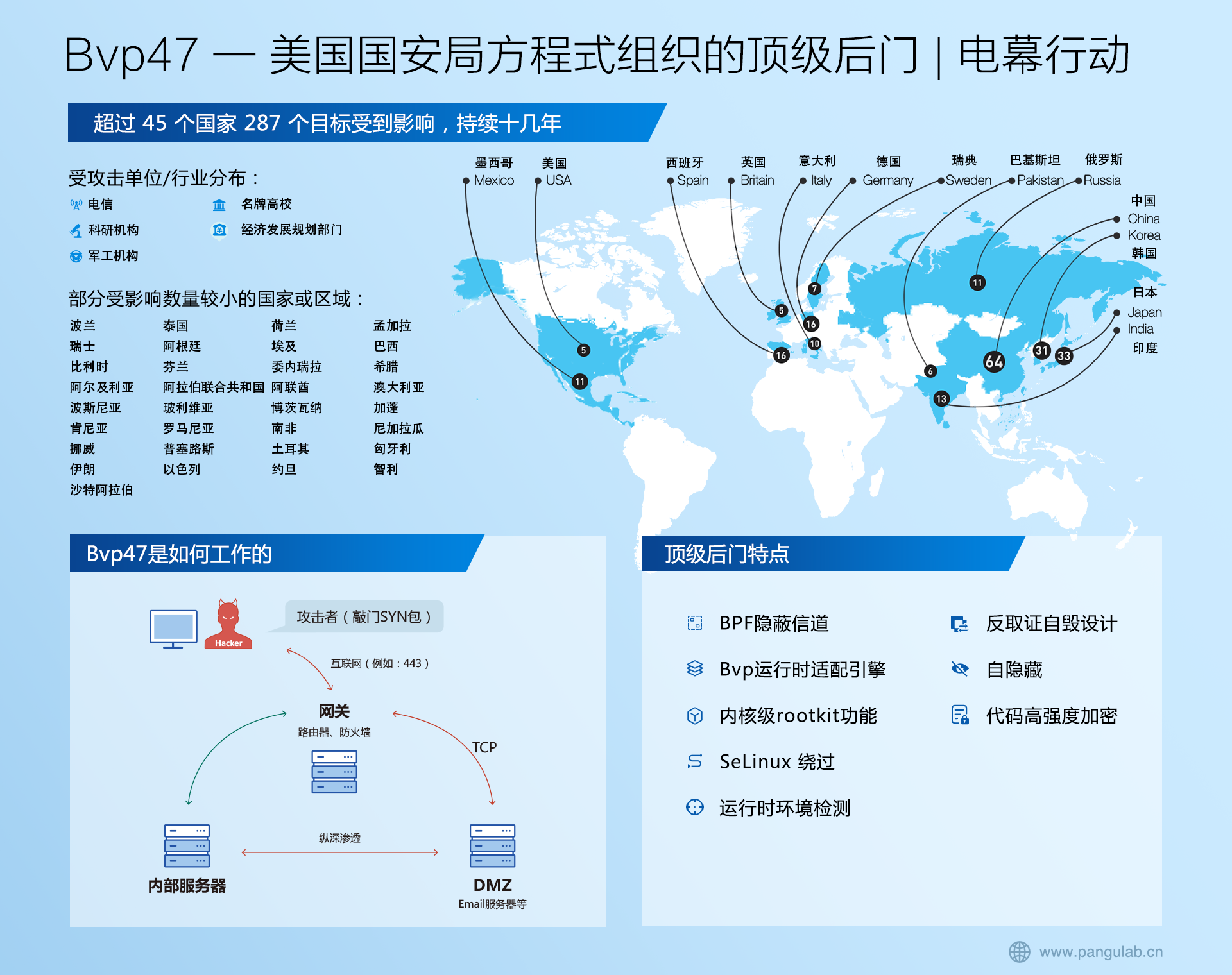SpringBoot——Servlet容器启动解析
前言
SpringBoot1.x只区分web环境和非web环境,而在2.x版本中引入了Reactive环境,即响应式环境.那么现在SpringBoot支持三种环境: Servlet的web环境、Reactive的web环境以及非web环境。90%以上的公司使用的是Servlet的web环境,而该环境默认使用的是tomcat容器,本章内容主要就是介绍Servlet容器启动流程。
Tomcat 是什么
Tomcat 是由 Apache 开发的一个 Servlet 容器,实现了对 Servlet 和 JSP 的支持,并提供了作为Web服务器的一些特有功能,如Tomcat管理和控制平台、安全域管理和Tomcat阀等。
由于 Tomcat 本身也内含了一个 HTTP 服务器,它也可以被视作一个单独的 Web 服务器。但是,不能将 Tomcat 和 Apache HTTP 服务器混淆,Apache HTTP 服务器是一个用 C 语言实现的 HTTP Web 服务器;这两个 HTTP web server 不是捆绑在一起的。Tomcat 包含了一个配置管理工具,也可以通过编辑XML格式的配置文件来进行配置。
容器架构

容器处理

启动流程解析
在SpringApplication.run(Application.class,args)里面会构造一个SpringApplication对象,进入其构造函数中
public class SpringApplication {
private WebApplicationType webApplicationType;
public SpringApplication(ResourceLoader resourceLoader, Class... primarySources) {
this.resourceLoader = resourceLoader;
Assert.notNull(primarySources, "PrimarySources must not be null");
this.primarySources = new LinkedHashSet<>(Arrays.asList(primarySources));
//webApplicationType属性决定了后续容器启动是servlet还是reactive
this.webApplicationType = WebApplicationType.deduceFromClasspath();
setInitializers((Collection) getSpringFactoriesInstances(ApplicationContextInitializer.class));
setListeners((Collection) getSpringFactoriesInstances(ApplicationListener.class));
this.mainApplicationClass = deduceMainApplicationClass();
}
}
public enum WebApplicationType {
/**
* The application should not run as a web application and should not start an
* embedded web server.
*/
NONE,
/**
* The application should run as a servlet-based web application and should start an
* embedded servlet web server.
*/
SERVLET,
/**
* The application should run as a reactive web application and should start an
* embedded reactive web server.
*/
REACTIVE;
private static final String[] SERVLET_INDICATOR_CLASSES = { "javax.servlet.Servlet",
"org.springframework.web.context.ConfigurableWebApplicationContext" };
private static final String WEBMVC_INDICATOR_CLASS = "org.springframework." + "web.servlet.DispatcherServlet";
private static final String WEBFLUX_INDICATOR_CLASS = "org." + "springframework.web.reactive.DispatcherHandler";
private static final String JERSEY_INDICATOR_CLASS = "org.glassfish.jersey.servlet.ServletContainer";
private static final String SERVLET_APPLICATION_CONTEXT_CLASS = "org.springframework.web.context.WebApplicationContext";
private static final String REACTIVE_APPLICATION_CONTEXT_CLASS = "org.springframework.boot.web.reactive.context.ReactiveWebApplicationContext";
//通过判断Classpath路径下是否存在某些特定的类,来决定当前是什么样的环境
static WebApplicationType deduceFromClasspath() {
if (ClassUtils.isPresent(WEBFLUX_INDICATOR_CLASS, null) && !ClassUtils.isPresent(WEBMVC_INDICATOR_CLASS, null)
&& !ClassUtils.isPresent(JERSEY_INDICATOR_CLASS, null)) {
return WebApplicationType.REACTIVE;
}
for (String className : SERVLET_INDICATOR_CLASSES) {
if (!ClassUtils.isPresent(className, null)) {
return WebApplicationType.NONE;
}
}
return WebApplicationType.SERVLET;
}
}
在SpringApplication的run方法中,context = createApplicationContext()代表创建应用上下文,其就是根据属性webApplicationType来构造什么类
public class SpringApplication {
/**
* The class name of application context that will be used by default for non-web
* environments.
*/
public static final String DEFAULT_CONTEXT_CLASS = "org.springframework.context."
+ "annotation.AnnotationConfigApplicationContext";
/**
* The class name of application context that will be used by default for web
* environments.
*/
public static final String DEFAULT_SERVLET_WEB_CONTEXT_CLASS = "org.springframework.boot."
+ "web.servlet.context.AnnotationConfigServletWebServerApplicationContext";
/**
* The class name of application context that will be used by default for reactive web
* environments.
*/
public static final String DEFAULT_REACTIVE_WEB_CONTEXT_CLASS = "org.springframework."
+ "boot.web.reactive.context.AnnotationConfigReactiveWebServerApplicationContext";
public ConfigurableApplicationContext run(String... args) {
......
try {
......
//创建应用上下文
context = createApplicationContext();
......
}
catch (Throwable ex) {
......
}
......
return context;
}
protected ConfigurableApplicationContext createApplicationContext() {
Class contextClass = this.applicationContextClass;
if (contextClass == null) {
try {
switch (this.webApplicationType) {
case SERVLET:
contextClass = Class.forName(DEFAULT_SERVLET_WEB_CONTEXT_CLASS);
break;
case REACTIVE:
contextClass = Class.forName(DEFAULT_REACTIVE_WEB_CONTEXT_CLASS);
break;
default:
contextClass = Class.forName(DEFAULT_CONTEXT_CLASS);
}
}
catch (ClassNotFoundException ex) {
throw new IllegalStateException(
"Unable create a default ApplicationContext, " + "please specify an ApplicationContextClass",
ex);
}
}
return (ConfigurableApplicationContext) BeanUtils.instantiateClass(contextClass);
}
}
servlet容器启动是在refreshContext(context)方法当中,该方法最终会调用AbstractApplicationContext类中的refresh()方法,该方法会调用onRefresh()方法
private void refreshContext(ConfigurableApplicationContext context) {
refresh(context);
if (this.registerShutdownHook) {
try {
context.registerShutdownHook();
}
catch (AccessControlException ex) {
// Not allowed in some environments.
}
}
}
@Override
public void refresh() throws BeansException, IllegalStateException {
synchronized (this.startupShutdownMonitor) {
......
try {
......
// Initialize other special beans in specific context subclasses.
onRefresh();
......
}
catch (BeansException ex) {
......
}
finally {
......
}
}
}
onRefresh()方法由子类实现,根据不同的应用上下文去调用不同的方法,这里为Servlet容器环境,所以调用ServletWebServerApplicationContext类中的onRefresh()方法
public class ServletWebServerApplicationContext extends GenericWebApplicationContext
implements ConfigurableWebServerApplicationContext {
@Override
protected void onRefresh() {
super.onRefresh();
try {
//构建web服务器
createWebServer();
}
catch (Throwable ex) {
throw new ApplicationContextException("Unable to start web server", ex);
}
}
private void createWebServer() {
// 刚开始这两个属性都为null
WebServer webServer = this.webServer;
ServletContext servletContext = getServletContext();
if (webServer == null && servletContext == null) {
// 走到这步获取WebServerFactory
ServletWebServerFactory factory = getWebServerFactory();
//获取WebServerFactory的具体实现之后,调用getWebServer获取一个具体的WebServer,
//默认调用TomcatServletWebServerFactory中的getWebServer()方法
this.webServer = factory.getWebServer(getSelfInitializer());
}
else if (servletContext != null) {
try {
getSelfInitializer().onStartup(servletContext);
}
catch (ServletException ex) {
throw new ApplicationContextException("Cannot initialize servlet context", ex);
}
}
initPropertySources();
}
protected ServletWebServerFactory getWebServerFactory() {
// Use bean names so that we don't consider the hierarchy
// 默认返回只有一个,tomcatServletWebServerFactory
String[] beanNames = getBeanFactory().getBeanNamesForType(ServletWebServerFactory.class);
if (beanNames.length == 0) {
throw new ApplicationContextException("Unable to start ServletWebServerApplicationContext due to missing "
+ "ServletWebServerFactory bean.");
}
if (beanNames.length > 1) {
throw new ApplicationContextException("Unable to start ServletWebServerApplicationContext due to multiple "
+ "ServletWebServerFactory beans : " + StringUtils.arrayToCommaDelimitedString(beanNames));
}
// 获得BeanFactory后调用getBean创建单例bean
return getBeanFactory().getBean(beanNames[0], ServletWebServerFactory.class);
}
}
public class TomcatServletWebServerFactory extends AbstractServletWebServerFactory
implements ConfigurableTomcatWebServerFactory, ResourceLoaderAware {
// 调用此方法创建webServer
@Override
public WebServer getWebServer(ServletContextInitializer... initializers) {
// 创建一个tomcat
Tomcat tomcat = new Tomcat();
// 设置基础目录等属性
File baseDir = (this.baseDirectory != null) ? this.baseDirectory : createTempDir("tomcat");
tomcat.setBaseDir(baseDir.getAbsolutePath());
Connector connector = new Connector(this.protocol);
tomcat.getService().addConnector(connector);
customizeConnector(connector);
tomcat.setConnector(connector);
tomcat.getHost().setAutoDeploy(false);
configureEngine(tomcat.getEngine());
for (Connector additionalConnector : this.additionalTomcatConnectors) {
tomcat.getService().addConnector(additionalConnector);
}
prepareContext(tomcat.getHost(), initializers);
return getTomcatWebServer(tomcat);
}
protected TomcatWebServer getTomcatWebServer(Tomcat tomcat) {
// 这步就创建一个TomcatWebServer,里面还会做一些事情......
return new TomcatWebServer(tomcat, getPort() >= 0);
}
}
接着看initPropertySources()方法
protected void initPropertySources() {
ConfigurableEnvironment env = this.getEnvironment();
if (env instanceof ConfigurableWebEnvironment) {
((ConfigurableWebEnvironment)env).initPropertySources(this.servletContext, (ServletConfig)null);
}
}
public void initPropertySources(@Nullable ServletContext servletContext, @Nullable ServletConfig servletConfig) {
WebApplicationContextUtils.initServletPropertySources(this.getPropertySources(), servletContext, servletConfig);
}
public static void initServletPropertySources(MutablePropertySources sources, @Nullable ServletContext servletContext, @Nullable ServletConfig servletConfig) {
Assert.notNull(sources, "'propertySources' must not be null");
String name = "servletContextInitParams";
// 判断servletContext不为null且包含这个servletContextInitParams属性集
if (servletContext != null && sources.contains(name) && sources.get(name) instanceof StubPropertySource) {
// 封装一个ServletContextPropertySource属性集替换原有的
sources.replace(name, new ServletContextPropertySource(name, servletContext));
}
name = "servletConfigInitParams";
// servletConfig默认为null
if (servletConfig != null && sources.contains(name) && sources.get(name) instanceof StubPropertySource) {
sources.replace(name, new ServletConfigPropertySource(name, servletConfig));
}
}
这样就完成了webServer即Tomcat服务器的创建 在进入AbstractApplicationContext中refresh()方法中的finishRefresh()方法中,该方法会根据web容器的环境进行调用,这里会进入ServletWebServerApplicationContext类中的finishRefresh()方法中
@Override
protected void finishRefresh() {
super.finishRefresh();
//启动WebServer
WebServer webServer = startWebServer();
if (webServer != null) {
// 发布Server初始完毕事件
publishEvent(new ServletWebServerInitializedEvent(webServer, this));
}
}
private WebServer startWebServer() {
WebServer webServer = this.webServer;
if (webServer != null) {
webServer.start();
}
return webServer;
}
@Override
public void start() throws WebServerException {
synchronized (this.monitor) {
if (this.started) {
return;
}
try {
addPreviouslyRemovedConnectors();
Connector connector = this.tomcat.getConnector();
if (connector != null && this.autoStart) {
performDeferredLoadOnStartup();
}
checkThatConnectorsHaveStarted();
this.started = true;
logger.info("Tomcat started on port(s): " + getPortsDescription(true) + " with context path '"
+ getContextPath() + "'");
}
catch (ConnectorStartFailedException ex) {
stopSilently();
throw ex;
}
catch (Exception ex) {
throw new WebServerException("Unable to start embedded Tomcat server", ex);
}
finally {
Context context = findContext();
ContextBindings.unbindClassLoader(context, context.getNamingToken(), getClass().getClassLoader());
}
}
}
启动前准备


webServer创建入口


servlet启动

web容器工厂类加载解析
默认返回只有一个TomcatServletWebServerFactory,那么这个bean定义什么时候被加载到容器中
String[] beanNames = getBeanFactory().getBeanNamesForType(ServletWebServerFactory.class);
它是通过ConfigurationClassParser类中的parse方法,通过@Import注解导入到容器中的
class ConfigurationClassParser {
public void parse(Set configCandidates) {
for (BeanDefinitionHolder holder : configCandidates) {
BeanDefinition bd = holder.getBeanDefinition();
try {
if (bd instanceof AnnotatedBeanDefinition) {
parse(((AnnotatedBeanDefinition) bd).getMetadata(), holder.getBeanName());
}
else if (bd instanceof AbstractBeanDefinition && ((AbstractBeanDefinition) bd).hasBeanClass()) {
parse(((AbstractBeanDefinition) bd).getBeanClass(), holder.getBeanName());
}
else {
parse(bd.getBeanClassName(), holder.getBeanName());
}
}
catch (BeanDefinitionStoreException ex) {
throw ex;
}
catch (Throwable ex) {
throw new BeanDefinitionStoreException(
"Failed to parse configuration class [" + bd.getBeanClassName() + "]", ex);
}
}
// 这边会处理@Import注解导入的配置类
this.deferredImportSelectorHandler.process();
}
}
class ConfigurationClassParser {
private class DeferredImportSelectorHandler {
public void process() {
List deferredImports = this.deferredImportSelectors;
this.deferredImportSelectors = null;
try {
if (deferredImports != null) {
DeferredImportSelectorGroupingHandler handler = new DeferredImportSelectorGroupingHandler();
deferredImports.sort(DEFERRED_IMPORT_COMPARATOR);
// 排序并依此遍历调用register方法
deferredImports.forEach(handler::register);
handler.processGroupImports();
}
}
finally {
this.deferredImportSelectors = new ArrayList<>();
}
}
}
}
class ConfigurationClassParser {
private class DeferredImportSelectorGroupingHandler {
private final Map groupings = new LinkedHashMap<>();
private final Map configurationClasses = new HashMap<>();
public void register(DeferredImportSelectorHolder deferredImport) {
// 这个返回的Selector就是AutoConfigurationImportSelector,这也是@SpringBootApplication上通过@Import注解
// 导入的Selector. getImportGroup返回的是AutoConfigurationGroup.class
Class group = deferredImport.getImportSelector()
.getImportGroup();
// computeIfAbsent就是不存在就创建,这边也是创建一个grouping
DeferredImportSelectorGrouping grouping = this.groupings.computeIfAbsent(
(group != null ? group : deferredImport),
key -> new DeferredImportSelectorGrouping(createGroup(group)));
// this.deferredImports.add(deferredImport);
// 加入到了deferredImports中,List deferredImports = new ArrayList<>()
grouping.add(deferredImport);
// 放入到configurationClasses中
this.configurationClasses.put(deferredImport.getConfigurationClass().getMetadata(),
deferredImport.getConfigurationClass());
}
}
}
deferredImports.forEach(handler::register),这边主要是构造了一个grouping,在下一步进行处理handler.processGroupImports()
public void processGroupImports() {
for (DeferredImportSelectorGrouping grouping : this.groupings.values()) {
// 下面先分析这个getImports方法
grouping.getImports().forEach(entry -> {
ConfigurationClass configurationClass = this.configurationClasses.get(
entry.getMetadata());
try {
processImports(configurationClass, asSourceClass(configurationClass),
asSourceClasses(entry.getImportClassName()), false);
}
catch (BeanDefinitionStoreException ex) {
throw ex;
}
catch (Throwable ex) {
throw new BeanDefinitionStoreException(
"Failed to process import candidates for configuration class [" +
configurationClass.getMetadata().getClassName() + "]", ex);
}
});
}
}
public Iterable getImports() {
// 这边的deferredImports是通过grouping.add(deferredImport)添加进去的
for (DeferredImportSelectorHolder deferredImport : this.deferredImports) {
this.group.process(deferredImport.getConfigurationClass().getMetadata(),
deferredImport.getImportSelector());
}
return this.group.selectImports();
}
// 两个参数如下图所示,annotationMetadata是主配置类上面的注解
@Override
public void process(AnnotationMetadata annotationMetadata, DeferredImportSelector deferredImportSelector) {
Assert.state(deferredImportSelector instanceof AutoConfigurationImportSelector,
() -> String.format("Only %s implementations are supported, got %s",
AutoConfigurationImportSelector.class.getSimpleName(),
deferredImportSelector.getClass().getName()));
// 下面先分析下这个getAutoConfigurationEntry方法
AutoConfigurationEntry autoConfigurationEntry = ((AutoConfigurationImportSelector) deferredImportSelector)
.getAutoConfigurationEntry(getAutoConfigurationMetadata(), annotationMetadata);
this.autoConfigurationEntries.add(autoConfigurationEntry);
for (String importClassName : autoConfigurationEntry.getConfigurations()) {
// 接着依次遍历放入到这个map中,Map entries = new LinkedHashMap()
this.entries.putIfAbsent(importClassName, annotationMetadata);
}
}
 这边就到了AutoConfigurationImportSelector类的getAutoConfigurationEntry方法中
这边就到了AutoConfigurationImportSelector类的getAutoConfigurationEntry方法中
protected AutoConfigurationEntry getAutoConfigurationEntry(AutoConfigurationMetadata autoConfigurationMetadata,
AnnotationMetadata annotationMetadata) {
// 判断是否支持自动配置
if (!isEnabled(annotationMetadata)) {
return EMPTY_ENTRY;
}
// 这个attributes属性就是上图中显示的,用来过滤自动配置类的
AnnotationAttributes attributes = getAttributes(annotationMetadata);
// 下面分析这个方法,这个就是加载容器中的自动配置类
List configurations = getCandidateConfigurations(annotationMetadata, attributes);
// 去除重复的,方法就是放入set再放入list中
configurations = removeDuplicates(configurations);
// 去除掉应该被排除的
Set exclusions = getExclusions(annotationMetadata, attributes);
checkExcludedClasses(configurations, exclusions);
configurations.removeAll(exclusions);
// 通过filter过滤,下面分析,过滤完发现只有22个了
configurations = filter(configurations, autoConfigurationMetadata);
// 发布一个事件,好像没有做啥关键的
fireAutoConfigurationImportEvents(configurations, exclusions);
// 将configurations封装成AutoConfigurationEntry返回
return new AutoConfigurationEntry(configurations, exclusions);
}
protected boolean isEnabled(AnnotationMetadata metadata) {
if (getClass() == AutoConfigurationImportSelector.class) {
// 判断有没有配置这个属性,没有的话默认为true,
// String ENABLED_OVERRIDE_PROPERTY = "spring.boot.enableautoconfiguration";
return getEnvironment().getProperty(EnableAutoConfiguration.ENABLED_OVERRIDE_PROPERTY, Boolean.class, true);
}
return true;
}
 通过filter方法过滤,过滤完发现只有22个了
通过filter方法过滤,过滤完发现只有22个了
private List filter(List configurations, AutoConfigurationMetadata autoConfigurationMetadata) {
long startTime = System.nanoTime();
String[] candidates = StringUtils.toStringArray(configurations);
boolean[] skip = new boolean[candidates.length];
boolean skipped = false;
for (AutoConfigurationImportFilter filter : getAutoConfigurationImportFilters()) {
invokeAwareMethods(filter);
boolean[] match = filter.match(candidates, autoConfigurationMetadata);
for (int i = 0; i < match.length; i++) {
if (!match[i]) {
skip[i] = true;
candidates[i] = null;
skipped = true;
}
}
}
if (!skipped) {
return configurations;
}
List result = new ArrayList<>(candidates.length);
for (int i = 0; i < candidates.length; i++) {
if (!skip[i]) {
result.add(candidates[i]);
}
}
if (logger.isTraceEnabled()) {
int numberFiltered = configurations.size() - result.size();
logger.trace("Filtered " + numberFiltered + " auto configuration class in "
+ TimeUnit.NANOSECONDS.toMillis(System.nanoTime() - startTime) + " ms");
}
return new ArrayList<>(result);
}
protected List getAutoConfigurationImportFilters() {
// 看一下这个过滤的逻辑,看下图它的实现类大概就知道它是怎样过滤了
return SpringFactoriesLoader.loadFactories(AutoConfigurationImportFilter.class, this.beanClassLoader);
}

过滤完之后会发现此时Listorg.springframework.boot.autoconfigure.web.servlet.ServletWebServerFactoryAutoConfiguration


@Configuration
@AutoConfigureOrder(Ordered.HIGHEST_PRECEDENCE)
@ConditionalOnClass(ServletRequest.class)
@ConditionalOnWebApplication(type = Type.SERVLET)
@EnableConfigurationProperties(ServerProperties.class)
@Import({ ServletWebServerFactoryAutoConfiguration.BeanPostProcessorsRegistrar.class,
// 会Import一个这个
ServletWebServerFactoryConfiguration.EmbeddedTomcat.class,
ServletWebServerFactoryConfiguration.EmbeddedJetty.class,
ServletWebServerFactoryConfiguration.EmbeddedUndertow.class })
public class ServletWebServerFactoryAutoConfiguration {
......
}
@Configuration
class ServletWebServerFactoryConfiguration {
@Configuration
@ConditionalOnClass({ Servlet.class, Tomcat.class, UpgradeProtocol.class })
@ConditionalOnMissingBean(value = ServletWebServerFactory.class, search = SearchStrategy.CURRENT)
public static class EmbeddedTomcat {
@Bean
public TomcatServletWebServerFactory tomcatServletWebServerFactory() {
// 这边就会创建一个TomcatServletWebServerFactory
return new TomcatServletWebServerFactory();
}
}
}
到此为止grouping.getImports方法分析完了,它是返回之前加载的29个自动配置类

class ConfigurationClassParser {
private class DeferredImportSelectorGroupingHandler {
public void processGroupImports() {
for (DeferredImportSelectorGrouping grouping : this.groupings.values()) {
grouping.getImports().forEach(entry -> {
// 这边这个configurationClass获取的还是主配置类SpringbootApplication
ConfigurationClass configurationClass = this.configurationClasses.get(
entry.getMetadata());
try {
processImports(configurationClass, asSourceClass(configurationClass),
asSourceClasses(entry.getImportClassName()), false);
}
catch (BeanDefinitionStoreException ex) {
throw ex;
}
catch (Throwable ex) {
throw new BeanDefinitionStoreException(
"Failed to process import candidates for configuration class [" +
configurationClass.getMetadata().getClassName() + "]", ex);
}
});
}
}
}
}
web容器个性化配置解析
属性注入

工厂类初始化

BeanPostProcessor方法实现

定制化流程

入口,onRefresh方法中会创建webServer,走到这里
public class ServletWebServerApplicationContext extends GenericWebApplicationContext
implements ConfigurableWebServerApplicationContext {
protected ServletWebServerFactory getWebServerFactory() {
// Use bean names so that we don't consider the hierarchy
// 默认返回只有一个,tomcatServletWebServerFactory
String[] beanNames = getBeanFactory().getBeanNamesForType(ServletWebServerFactory.class);
if (beanNames.length == 0) {
throw new ApplicationContextException("Unable to start ServletWebServerApplicationContext due to missing "
+ "ServletWebServerFactory bean.");
}
if (beanNames.length > 1) {
throw new ApplicationContextException("Unable to start ServletWebServerApplicationContext due to multiple "
+ "ServletWebServerFactory beans : " + StringUtils.arrayToCommaDelimitedString(beanNames));
}
// 调用getBean创建工厂类实例,这边会调用getBean开始创建bean实例对象
return getBeanFactory().getBean(beanNames[0], ServletWebServerFactory.class);
}
}
在Bean初始化完成之后会遍历BeanFactory中所有的BeanPostProcessor实现,依次调用BeanPostProcessor接口的postProcessBeforeInitialization方法,在创建Web服务的工厂类的时候也会经历这个步骤,这个方法调用点就在AbstractAutowireCapableBeanFactory类中applyBeanPostProcessorsBeforeInitialization()方法
public abstract class AbstractAutowireCapableBeanFactory extends AbstractBeanFactory
implements AutowireCapableBeanFactory {
@Override
public Object applyBeanPostProcessorsBeforeInitialization(Object existingBean, String beanName)
throws BeansException {
Object result = existingBean;
for (BeanPostProcessor processor : getBeanPostProcessors()) {
// 通过断点调试可以发现当中有一个WebServerFactoryCustomizerBeanPostProcessor
Object current = processor.postProcessBeforeInitialization(result, beanName);
if (current == null) {
return result;
}
result = current;
}
return result;
}
}
可以看到postProcessBeforeInitialization方法多个实现中有一个WebServerFactoryCustomizerBeanPostProcessor
 点击进入WebServerFactoryCustomizerBeanPostProcessor类中的postProcessBeforeInitialization方法
点击进入WebServerFactoryCustomizerBeanPostProcessor类中的postProcessBeforeInitialization方法
public class WebServerFactoryCustomizerBeanPostProcessor implements BeanPostProcessor, BeanFactoryAware {
@Override
public Object postProcessBeforeInitialization(Object bean, String beanName) throws BeansException {
if (bean instanceof WebServerFactory) {
postProcessBeforeInitialization((WebServerFactory) bean);
}
return bean;
}
private void postProcessBeforeInitialization(WebServerFactory webServerFactory) {
// 先看下getCustomizers方法
// 这边lamda表达式的意思就是遍历getCustomizers方法,通过invoke调用每个customizer.cutomize方法定制修改web容器
LambdaSafe.callbacks(WebServerFactoryCustomizer.class, getCustomizers(), webServerFactory)
.withLogger(WebServerFactoryCustomizerBeanPostProcessor.class)
.invoke((customizer) -> customizer.customize(webServerFactory));
}
private Collection> getCustomizers() {
if (this.customizers == null) {
// Look up does not include the parent context
// 获取容器中的所有WebServerFactoryCustomizer
this.customizers = new ArrayList<>(getWebServerFactoryCustomizerBeans());
this.customizers.sort(AnnotationAwareOrderComparator.INSTANCE);
this.customizers = Collections.unmodifiableList(this.customizers);
}
return this.customizers;
}
private Collection> getWebServerFactoryCustomizerBeans() {
return (Collection) this.beanFactory.getBeansOfType(WebServerFactoryCustomizer.class, false, false).values();
}
}
我们在来看下图中第二个定制器,ServletWebServerFactoryCustomizer是怎么注入的呢?

@Configuration
@AutoConfigureOrder(Ordered.HIGHEST_PRECEDENCE)
@ConditionalOnClass(ServletRequest.class)
@ConditionalOnWebApplication(type = Type.SERVLET)
@EnableConfigurationProperties(ServerProperties.class)
@Import({ ServletWebServerFactoryAutoConfiguration.BeanPostProcessorsRegistrar.class,
ServletWebServerFactoryConfiguration.EmbeddedTomcat.class,
ServletWebServerFactoryConfiguration.EmbeddedJetty.class,
ServletWebServerFactoryConfiguration.EmbeddedUndertow.class })
public class ServletWebServerFactoryAutoConfiguration {
// 通过ServletWebServerFactoryAutoConfiguration的bean方法引入到的,
// 并且赋值serverProperties
@Bean
public ServletWebServerFactoryCustomizer servletWebServerFactoryCustomizer(ServerProperties serverProperties) {
return new ServletWebServerFactoryCustomizer(serverProperties);
}
}
//这就是我们在application.properties中修改port,会被赋值到这里,然后定制器就可以取到
@ConfigurationProperties(prefix = "server", ignoreUnknownFields = true)
public class ServerProperties {
/**
* Server HTTP port.
*/
private Integer port;
/**
* Network address to which the server should bind.
*/
private InetAddress address;
......
}
// 然后我们再来看invoke((customizer) -> customizer.customize(webServerFactory))这个步骤,这会调用每个定制器的定制方法
// 具体我们看下ServletWebServerFactoryCustomizer的cutomize方法
public class ServletWebServerFactoryCustomizer
implements WebServerFactoryCustomizer, Ordered {
private final ServerProperties serverProperties;
public ServletWebServerFactoryCustomizer(ServerProperties serverProperties) {
this.serverProperties = serverProperties;
}
@Override
public int getOrder() {
return 0;
}
@Override
public void customize(ConfigurableServletWebServerFactory factory) {
PropertyMapper map = PropertyMapper.get().alwaysApplyingWhenNonNull();
// 这边是lamda表达式,调用factory.setPort进行赋值
map.from(this.serverProperties::getPort).to(factory::setPort);
map.from(this.serverProperties::getAddress).to(factory::setAddress);
map.from(this.serverProperties.getServlet()::getContextPath).to(factory::setContextPath);
map.from(this.serverProperties.getServlet()::getApplicationDisplayName).to(factory::setDisplayName);
map.from(this.serverProperties.getServlet()::getSession).to(factory::setSession);
map.from(this.serverProperties::getSsl).to(factory::setSsl);
map.from(this.serverProperties.getServlet()::getJsp).to(factory::setJsp);
map.from(this.serverProperties::getCompression).to(factory::setCompression);
map.from(this.serverProperties::getHttp2).to(factory::setHttp2);
map.from(this.serverProperties::getServerHeader).to(factory::setServerHeader);
map.from(this.serverProperties.getServlet()::getContextParameters).to(factory::setInitParameters);
}
}
参考: https://my.oschina.net/liwanghong/blog/3168322
https://www.cnblogs.com/hggen/p/6264475.html
https://www.cnblogs.com/jingmoxukong/p/8258837.html







